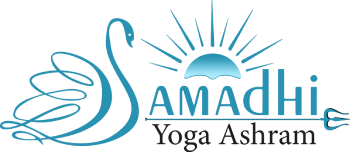Pranayama, the practice of controlling one’s breath, is an essential component of yoga. It involves various breathing techniques that help to improve physical, mental, and emotional well-being. Incorporating pranayama into our daily lives can help us stay calm, focused, and energized. In this article, we will discuss five pranayamas that can be easily incorporated into our daily routine to reap their benefits. These pranayamas are Nadi Shodhana, Kapalabhati, Bhastrika, Ujjayi, and Bhastrika.
Nadi Shodhana Pranayama
Nadi Shodhana Pranayama is a type of breathing exercise that is also known as “alternate nostril breathing.” This technique involves alternating the flow of breath between the left and right nostrils, using your fingers to block one nostril while inhaling and exhaling through the other. It is a popular pranayama practice that helps to balance the flow of energy in the body and calm the mind.
Step-by-step instructions:
- Sit in a comfortable position with your back straight and your shoulders relaxed.
- Place your left hand on your left knee with your palm facing up.
- Take your right hand and bring it up to your nose.
- Use your right thumb to close your right nostril and inhale through your left nostril.
- Pause for a moment, then close your left nostril with your ring finger, and exhale through your right nostril.
- Inhale through your right nostril, pause, then close your right nostril and exhale through your left nostril.
- This completes one cycle. Repeat for several rounds, focusing on slow and steady breathing.
Benefits:
- Promotes relaxation and reduces stress
- Helps to balance the nervous system
- Improves mental clarity and focus
- Enhances respiratory function
- Cleanses and purifies the energy channels in the body.
Kapalabhati Pranayama
Kapalabhati Pranayama is a breathing technique in the yoga that helps to energize the body, improve concentration, and purify the mind. It involves forceful exhalation through the nose, followed by passive inhalation. Kapalabhati means “skull shining” in Sanskrit, and it is believed to help purify the mind and body by removing toxins.
Step-by-step instructions:
- Sit comfortably with your back straight and your eyes closed.
- Place your hands on your knees, palms facing down.
- Take a deep breath through your nose, expanding your belly.
- Exhale forcefully through your nose, pulling your belly in towards your spine.
- Relax your belly and allow the inhalation to happen naturally.
- Repeat this process for several rounds, starting with 20-30 breaths per round and gradually increasing to 50-100 breaths per round.
Benefits:
- Energizes the body and mind
- Improves digestion and metabolism
- Purifies the mind and body by removing toxins
- Increases lung capacity and oxygenation of the blood
- Improves concentration and focus
Bhramari Pranayama
Bhramari Pranayama, also known as the humming bee breath, is a calming and soothing pranayama practice. In this technique, you create a humming sound that resembles the buzzing of a bee. It involves inhaling deeply through the nose and exhaling while making a humming sound, which creates a vibration in the body that helps to calm the mind and reduce stress.
Step-by-step instructions:
- Find a comfortable seated position with your back straight and your eyes closed.
- Close your ears with your thumbs and place your index fingers gently on your forehead, just above your eyebrows. Keep your other fingers relaxed.
- Inhale deeply through your nose.
- Exhale slowly while making a humming sound like a bee.
- Focus on the sound and vibration created by the humming.
- Repeat for several rounds.
Benefits:
- Reduces stress and anxiety
- Calms the mind and nervous system
- Soothes the nerves and helps to relieve headaches
- Relieves sinus congestion and allergies
- Improves concentration and memory
Ujjayi Pranayama
Ujjayi Pranayama, also known as the “victorious breath,” is a breathing technique commonly used in yoga. It involves constricting the back of the throat while inhaling and exhaling, creating a hissing or oceanic sound. This technique helps to regulate and deepen the breath, calming the mind and enhancing concentration.
Step-by-step instructions:
- Find a comfortable seated position with your spine straight and your shoulders relaxed.
- Inhale deeply through your nose, expanding your belly.
- Exhale through your mouth, making a “ha” sound as you contract your belly.
- Close your mouth and inhale deeply through your nose, constricting the back of your throat to create the Ujjayi sound.
- Hold your breath for a moment at the top of your inhalation.
- Exhale through your nose, again constricting the back of your throat to create the Ujjayi sound.
- Repeat for several rounds, focusing on the sound of your breath and the sensation of the air moving in and out of your body.
Benefits:
- Calms the mind and reduces stress and anxiety
- Helps to regulate the breath, improving respiratory function
- Enhances concentration and focus
- Warms the body from the inside, increasing circulation
- Can be used during physical exertion to increase endurance and stamina
Bhastrika Pranayama
Bhastrika Pranayama, also known as Bellows Breath, is a powerful breathing technique in the yoga that involves forceful inhalations and exhalations through the nose. It is an energizing and cleansing practice that is believed to purify the body and mind by removing toxins and negative emotions. The practice involves rapid breathing with an equal emphasis on inhalation and exhalation, creating a bellows-like effect. It is said to enhance the flow of prana or life force energy in the body, providing numerous physical and mental benefits.
Step-by-step instructions:
- Sit in a comfortable seated position with your spine straight and your hands on your knees in Gyan Mudra (index finger touching the tip of the thumb).
- Take a deep breath in and then exhale forcefully through your nose while contracting your abdominal muscles.
- Inhale forcefully through your nose and expand your abdomen.
- Exhale forcefully again, contracting your abdominal muscles.
- Continue this cycle for 10-15 rounds.
Benefits:
- Increases oxygen supply to the body and brain, improving overall health and mental clarity.
- Strengthens the respiratory system and improves lung capacity.
- Boosts metabolism and aids in weight loss.
- Balances the nervous system and reduces stress and anxiety.
- Helps to remove toxins from the body and purify the blood.
- Improves digestion and can alleviate gastrointestinal problems.
Bottom line
The five pranayamas – Nadi Shodhana Pranayama, Kapalabhati Pranayama, Bhramari Pranayama, Ujjayi Pranayama, and Bhastrika Pranayama – are incredibly powerful techniques to enhance overall health and well-being. As you have seen incorporating these pranayamas into a daily practice can offer numerous benefits, such as reduced stress, improved respiratory function, increased energy levels, and better focus and concentration.
It is essential to remember that practicing pranayama requires patience and consistency to experience the benefits fully. Start with just a few minutes of practice each day and gradually increase the duration and frequency as your body and mind adjust. With regular practice, pranayama can become a powerful tool to help you live a healthier and happier life.
If you liked this article and want to read more such ones then don’t forget to check out our website and dwell deep into the world of yoga.
We hope you stay safe and healthy. Don’t forget to practice yoga regularly and incorporate pranayama in your daily practice.
Namaste











